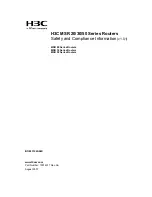
DCS-VIP User Guide
195
CALL AND TYPE INFORMATION
The format of DTMF data sent to a VM/AA port is as follows:
[CALL TYPE] + [DN1] + [SEPARATOR] + [DN2]
and an example of this would be
[FORWARD ALL] from [225] on trunk [703]
Each field can be programmed individually as follows:
0. EXTENSION FOR DN1
: If set to yes, when the voice mail auto attendant
system answers a call the DCS will send data in the DN1 field indicating that a
station is ringing the VM/AA port.
If set to no, when the voice mail auto attendant system answers a call the DCS will
not send station data in the DN1 field.
1. TRUNK FOR DN1
: If set to yes, when the voice mail auto attendant system
answers a call the DCS will send data in the DN1 field indicating that a trunk is
ringing the VM/AA port.
If set to no, when the voice mail auto attendant system answers a call the DCS will
not send trunk data in the DN1 field.
2. EXTENSION FOR DN2
: If set to yes, when the voice mail auto attendant
system answers a call the DCS will send data in the DN2 field indicating that an
originating station is ringing the VMAA port.
If set to no, when the voice mail auto attendant system answers a call the DCS will
not send station data in the DN2 field.
3. TRUNK FOR DN2
:If set to yes, when the voice mail auto attendant system
answers a call the DCS will send data in the DN2 field indicating that an originating
trunk is ringing the VMAA port.
If set to no, when the voice mail auto attendant system answers a call the DCS will
not send trunk data in the DN2 field.
4. SEPARATOR
: When both DN1 and DN2 are used, a digit defined here is sent
between DN1 and DN2 so the VMAA system can determine where DN1 stops and
where DN2 starts. The separator can be DTMF 0 through 9, A, B or C
5. DISCONNECT
: This is the call progress digit sent to the VMAA port in place of a
disconnect open. The digit defined here is sent three times.
6. CALL TYPE ID
: This is the DTMF digit that is sent first in the in-band digit
string and can identify any of the following call types:
0.
DIRECT CALL
A call originating directly from another station in the system.
1.
ALL FWD CALL
This indicates that a call was forwarded to the VM/AA port from a station with CALL
FORWARD ALL set.
2.
BSY FWD CALL
This indicates that a call was forwarded to the VM/AA port from a station with CALL
FORWARD BUSY set.
3.
NOA FWD CALL
This indicates that a call was forwarded to the VM/AA port from a station with CALL
FORWARD NO ANSWER set.
4.
RECALL
A call is recalling the VM/AA port after being transferred and not answered.
5.
DIR TRK CALL
A C.O. call has gone directly to VM/AA (e.g., trunk 717 DIL to VM/AA).
6.
OVERFLOW
A call has OVERFLOWED to the VM/AA port from a station group.
7.
DID CALL
A DID call has called the VM/AA port.
8.
MESSAGE CALL
















































